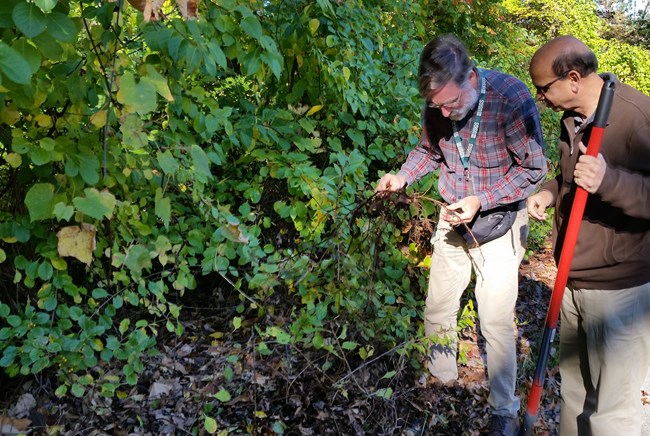
Photo by Wendy Smith
Recently, plant and soil ecologists have begun to investigate the role of plant-soil-microbe interactions to better understand the process of invasion. There is growing evidence that plant-microbial interactions may play an important role in nuisance species expansion. Thus, understanding this relationship may lead to the development of new strategies to manage invasive species.
Dr. Murulee Byappanahalli and Dr. Noel Pavlovic, ecologists at the U.S. Geological Survey (USGS) Great Lakes Science Center, Lake Michigan Ecological Research Station, are investigating the bacterial communities adjacent to and around the roots of Asiatic and American bittersweet in Indiana Dunes National Lakeshore. They are working to determine whether there might be differences in bacterial communities among these species. This work involves carefully removing roots from each species and collecting samples associated with the roots and adjacent root soil. Using new DNA sequencing techniques, they can identify bacterial communities represented in the samples and then characterize these communities. They analyze the results to determine whether the bacterial communities differ between species, between root zones and among sites. From additional greenhouse and field studies, these researchers hope to find possible candidate bacterial or fungal species that, when applied to the soil, might weaken Asiatic bittersweet and provide some new opportunities for control. Ultimately, an integrated approach combining some physical, chemical, and microbial control methods will likely be needed to manage Asiatic bittersweet.
Last updated: September 29, 2019
